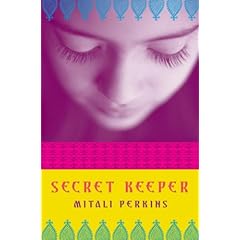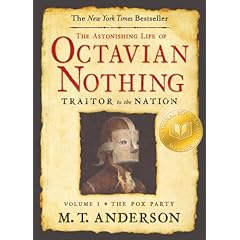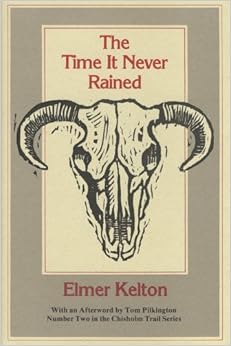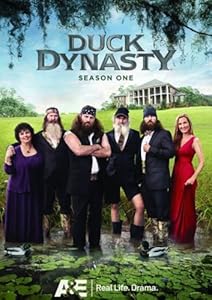January:
 Secret Keeper by Mitali Perkins. Semicolon review here.
Secret Keeper by Mitali Perkins. Semicolon review here.
I Choose To Be Happy: A School Shooting Survivor’s Triumph Over Tragedy by Missy Jenkins with WIlliam Croyle.
Washington: The Indispensable Man by James Thomas Flexner. Semicolon review of The Indispensable Man.
The Suspicions of Mr. Whicher: A Shocking Murder and the Undoing of a Great Victorian Detective by Kate Summerscale. Semicolon review here.
The Disreputable History of Frankie Landau-Banks by E. Lockhart.2008 National Book Award FInalist. Cybils Young Adult Fiction FInalist. Semicolon review here.
A Curse Dark As Gold by Elizabeth Bunce. Cybils Fantasy and Science FIction Finalist. Recommended by Miss Erin. Semicolon review here.
The Explosionist by Jenny Davidson. Cybils Fantasy and Science FIction Finalist. Semicolon review here.
Sweethearts by Sara Zarr. Another Cybils finalist,
 The Hunger Games by Suzanne Collins. Semicolon review here.
The Hunger Games by Suzanne Collins. Semicolon review here.
Prodigals and Those Who Love Them by Ruth Bell Graham.
Home by Marilynne Robinson.
Heaven: Your Real Home by Joni Eareckson Tada. January selection for Semicolon Book Club.
Ten Cents a Dance by Christine Fletcher. Semicolon review here.
Wake by Lisa McMann.
Schuyler’s Monster by Robert Rummel-Hudson. Semicolon review here.
Paper Towns by John Green.
The Juliet Club by Suzanne Harper.
Have You Found Her by Janice Erlbaum. Memoir of a difficult experience in counseling and mentoring a troubled teen. Semicolon review here
Finding Nouf by Zoe Ferraris. Semicolon review here.
The Ghost Map: The Story of London’s Most Terrifying Epidemic—and How It Changed Science, Cities, and the Modern World by Steven Johnson.
Holes by Louis Sachar.
February:
The Boy in the Alamo by Margaret Cousins.
In the Shadow of the Alamo by Sherry Garland.
Search for the Shadowman by Joan Lowery Nixon.
Moonshiner’s Gold by John R. Erickson.
Buffalo Moon by G. Clifton Wisler.
More information here.
The Guernsey Literary and Potato Peel Pie Society by Mary Ann Shaffer and Annie Barrows.
After the Fire by Robin Gaby Fisher. Recommended by Melissa at 5 Minutes for Books.
The Resistance by Gemma Malley. Semicolon review of The Declaration.
The Patron Saint of Butterflies by Cecilia Galante. Semicolon review here.
The Sparrow by Mary Doria Russell. Semicolon review here.
The Deadliest Monster by Jeff Baldwin.
The Love Letters by Madeleine L’Engle. Semicolon review here.
Time and Chance by Sharon Kay Penman. Fictional treatment of Henry II and his tempestuous reign.
Lady of Quality by Georgette Heyer.
March:
 The School of Essential Ingredients by Erica Bauermeister. Recommended by Megan at Leafing Through Life.
The School of Essential Ingredients by Erica Bauermeister. Recommended by Megan at Leafing Through Life.
The End of the Alphabet by C.S. Richardson. Recommended by She Is Too Fond of Books.
Change of Heart by Jodi Piccoult. Recommended at the 3Rs.
The Amazing Potato by Milton Meltzer.
Alas, Babylon by Pat Frank. I

The Compound –Bodeen. Recommended by Jen Robinson.
Star of Kazan—Ibbotson Recommended by Jen Robinson.
Stargirl by Jerry Spinelli.
Flipped by Wendelin Van Draanen. Recommended by Melanie at Deliciously Clean Reads.
Cutting for Stone by Abraham Verghese. Recommended at The Book Lady’s Blog.
Saving Juliet–Susan Selfors. Recommended by Melissa at Estella’s Revenge.

John Adams by David McCullough. The March Semicolon Book Club selection.
Book by Book: Notes on Reading and Life by Michael Dirda. Recommended by Krin at Enough to Read.
Life As We Knew It–Pfeiffer Recommended by SassyMonkey.
Doomsday Book—Willis Recommended by Lazy Cow.
Maisie Dobbs by Jaqueline Winspear.
Birds of a Feather by Jaqueline Winspear.
Pardonable Lies by Jaqueline WInspear.
When Zachary Beaver Came to Town by Kimberly Willis Holt.
Careless in Red by Elizabeth George.
In the Woods by Tana French. Recommended by Kelly at BigAlittlea. Also recommended at Whimpulsive.
So Brave, So Young and So Handsome by Leif Enger.
April:
 To Say Nothing of the Dog by Connie Willis. Semicolon review here.
To Say Nothing of the Dog by Connie Willis. Semicolon review here.
Eat Drink and Be from Mississippi by Nancy Kincaid.
Tender Grace by Jackina Stark. Semicolon review here.
Passage by Connie WIllis.
The Rule of Claw by John Brindley.
Winnie’s War by Jenny Moss.
I Remember the Alamo by D. Ann Love.
Just One Wish by Janette Rallison.
Alexander Hamilton by Ron Çhernow.
May:
Every Secret Thing by Ann Tatlock.
The Blood of Lambs by Kamal Saleem (with Lynn Vincent).
The Trap by Joan Lowery Nixon.
Gringolandia by Lyn Miller-Lachmann. Semicolon review of this YA novel set in Chile and in the U.S. among Chilean refugees, here.
Twisted by Laurie Halse Anderson.
Wife of the Gods by Kwei Quartey.
Lavinia by Ursula K. LeGuin.
 Princess of the Midnight Ball by Jessica Day George. Semicolon review here plus a short list of favorite novelized fairy tales.
Princess of the Midnight Ball by Jessica Day George. Semicolon review here plus a short list of favorite novelized fairy tales.
Wintergirls by Laurie Halse Anderson.
Tuck by Stephen Lawhead.
Ancient Highway by Bret Lott.
The English Patient by Michael Ondaatje.
The Elegance of the Hedgehog by Muriel Barbery.
The Well and the Mine by Gin Phillips. Semicolon review here.
Amazing Grace: The Story of America’s Most Beloved Song by Steve Turner.
June:
 The Chosen by Chaim Potok.
The Chosen by Chaim Potok.
The Promise by Chaim Potok.
Alligator Bayou by Donna Jo Napoli. Semicolon review here.
Confetti Girl by Diana Lopez. Semicolon review here.
The Arrow Over the Door by Joseph Bruchac. Semicolon review here.
Family Reminders by Julie Danneberg. Semicolon review here.
Escape Under the Forever Sky by Eve Yohalem. Semicolon review here.
Things Change by Patrick Jones. Semicolon review here.
The Adventurous Deeds of Deadwood Jones by Helen Hemphill. Semicolon review here.
 The Astonishing Life of Octavian Nothing, Traitor to the Nation:
The Astonishing Life of Octavian Nothing, Traitor to the Nation:
Volume 1: The Pox Party
Volume 2: The Kingdom on the Waves
by M.T. Anderson. Semicolon review here.
North of Beautiful by Justina Chen Headley. Semicolon review here.
Singin’ Texas by Edward Abernethy Francis.
Abide With Me: The World of VIctorian Hymns by Ian C. Bradley.
Lady of Milkweed Manor by Julie Klassen.
The Pillars of the Earth by Ken Follett.
The Lathe of Heaven by Ursula LeGuin. Semicolon review here.
Madonnas of Leningrad by Debra Dean.
101 Hymn Stories by Kenneth W. Osbeck.
101 More Hymn Stories by Kenneth W. Osbeck.
Then Sings My Soul by Robert Morgan.
July:
The Snow Goose by Paul Gallico. Semicolon review here.
An Exact Replica of a Figment of my Imagination by Elizabeth McCracken. Semicolon review here.
Dough: A Memoir by Mort Zachter.
A Perfect Union: Dolley Madison and the Creation of the American Nation by Catherine Allgor. Semicolon review here.
The Great Little Madison by Jean Fritz.
 Adrift by Allan Baillie.
Adrift by Allan Baillie.
The Chosen One by Carol Lynch Williams.
Real Sex: The Naked Truth About Chastity by Lauren Winner.
Your Jesus Is Too Safe by Jared Wilson.
When the War Was Over by Elizabeth Becker.
When Broken Glass Floats: Growing Up Under the Khmer Rouge by Chanrithy Him.
Hitchhiking Vietnam by Karin Muller.
August:
Three Men in a Boat by Jerome K. Jerome. Semicolon review here.
Fieldwork by Mischa Berlinski. Semicolon review here.
Main Street by Sinclair Lewis. Semicolon review here.
Graceling by Kristin Cashore. Semicolon review here.
Forgive Me by Amanda Eyre Ward.
 Heart of a Shepherd by Roseanne Parry. Semicolon review here.
Heart of a Shepherd by Roseanne Parry. Semicolon review here.
The Best Bad Luck I Ever Had by Kristin Levine. Semicolon review here.
Fingersmith by Sarah Waters.
Little Face by Sophie Hannah.
Blue Like Jazz by Donald Miller.
Buffalo Moon by G. Clifton Wisler.
Comanche Song by Janice Shefelman.
The Wolf’s Tooth by G. Clifton Wisler.
Wild Things by Clay Carmichael.
September:
The Associate by John Grisham.
Dying to Meet You (43 Old Cemetery Road) by Kate Klise. Illustrated by M. Sarah Klise.
How I Live Now by Meg Rosoff. Semicolon review here.
The Roar by Emma Clayton. Semicolon review here.
Cold Springs by Rick Riordan.
The Log of a Cowboy by Andy Adams.
The Housekeeper and the Professor by Yoko Ogawa. Semicolon review here.
 The Forest of Hands and Teeth by Carrie Ryan.
The Forest of Hands and Teeth by Carrie Ryan.
Catching Fire by Suzanne Collins.
Written in Bone: Buried Lives of Jamestown and Colonial Maryland by Sally M. Walker. Semicolon review here.
Andersonville by MacKinlay Kantor. Semicolon review here.
Sun and Moon, Ice and Snow by Jessica Day George.
Daisy Chain by Mary DeMuth.
The Log of a Cowboy by Andy Adams. Semicolon Texas Tuesday review here.
The Texan Scouts by Joseph Altsheler.
A Murder for Her Majesty by Beth Hilgartner. Semicolon discussion here.
I reviewed these and a couple of others here for Texas Tuesday:
Comanche Song by Janice Shefelman.
Spirit of Iron by Janice Shefelman.
The Wolf’s Tooth by G. Clifton Wisler.
October:
Children of God by Mary Doria Russell.
Gateway by Frederick Pohl.
A Thread of Grace by Mary Dorie Russell.
The Texan Scouts by Joseph Altsheler. Semicolon review here.
Unsigned Hype by Booker T. Mattison. Semicolon review here.
Luke and the Van Zandt County War by Judith MacBain Alter. Semicolon review here.
West Oversea by Lars Walker.
The Year of Pleasures by Elizabeth Berg. Semicolon review here.
Also Known as Harper by Ann Haywood Leal. Semicolon review here.
Anything But Typical by Nora Raleigh Baskin. Semicolon review here.
The Year the Swallows Came Early by Kathryn Fitzmaurice. Semicolon review here.
The Beef Princess of Practical County by Michelle Houts. Semicolon review here.
When You Reach Me by Rebecca Stead. Semicolon review here.
Any Which Wall by Laurel Snyder. Semicolon review here.
Mudville by Kurtis Scaletta. Semicolon review here.
The Girl Who Threw Butterflies by Mick Cochrane. Semicolon review here.
Models Don’t Eat Chocolate Cookies by Erin Dionne. Semicolon review here.
Neil Armstrong is My Uncle and Other Lies Muscle Man McGinty Told Me by Nan Marino.
Sahwira: An African Friendship by Carolyn Marsden.
Carolina Harmony by Marilyn Taylor McDowell.
Tropical Secrets: Holocaust Refugees in Cuba by Margarita Engle. Semicolon review here.
My Life in Pink and Green by Lisa Greenwald. Semicolon review here.
The Kind of Friends We Used To Be by Frances O’Roark Dowell. Semicolon review here.
All the Broken Pieces by An E. Burg. Semicolon review here.
The Brooklyn Nine by Alan Gratz.
The Mostly True Adventures of Homer P. Figg by Rodman Philbrick.
Peace, Locomotion by Jacqueline Woodson.
The Dunderheads by Paul Fleischman. Semicolon review here.
The Problem With the Puddles by Kate Feiffer. Semicolon review here.
Dessert First by Hallie Durand. Semicolon review here.
Love, Aubrey by Suzanne LaFleur. Betsy-Bee and I discuss Love, Aubrey.
Anna’s World by Wim Coleman and Pat Perrin. Semicolon review here.
Wanting Mor by Rukhsana Khan. Semicolon review here.
Callie’s Rules by Naomi Zucker. Semicolon review here.
Leaving the Bellweathers by Kristin Clark Venuti.
Lincoln and His Boys by Rosemary Wells. Semicolon review here.
November:
After by Amy Efaw. Semicolon review here.
Absolutely Maybe by Lisa Yee.
North and South by Elizabeth Gaskell. Semicolon review here.
Make Way for Sam Houston by Jean Fritz. Semicolon review here.
The Last Invisible Boy by Evan Kuhlman. Semicolon review here.
Gone From These Woods by Donna Bailey Seagraves. Semicolon review here.
Extra Credit by Andrew Clements. Clements’ latest school story is about a tomboyish girl who becomes pen pals with an Afghan boy and his sister.
The Evolution of Calpurnia Tate by Jacqueline Kelly. Semicolon review here.
Standing for Socks by Elissa Brent Weissman.
Angel Cake by Cathy Cassidy.
Return to Sender by Julia Alvarez. Semicolon review here.
A Recipe 4 Robbery by Marybeth Kelsey. Semicolon review here.
Take the Mummy and Run: The Riot Brothers Are on a Roll by Mary Amato.
Lucky Breaks by Susan Patron.
Scat by Carl Hiaassen.
The Beast of Backslope by Tracy Barrett.
Operation Yes by Sara Lewis Holmes.
Black Angels by Linda Beatrice Brown. Semicolon review here.
Al Capone Shines My Shoes by Gennifer Choldenko. Semicolon review here.
Rescuing Seneca Crane by Susan Runholt. Semicolon review here.
Dani Noir by Nova Ben Suma. Semicolon review here.
Born to Fly by Michael Ferrari. Semicolon review here.
Newsgirl by Liza Ketchum. Semicolon review here.
William S. and the Great Escape by Zilpha Keatley Snyder. Semicolon review here.
Bull Rider by Suzanne Morgan Williams. Semicolon review here.
December:
Cross My Heart and Hope to Spy by Ally Carter.
Don’t Judge a Girl By Her Cover by Ally Carter.
The Homeschool Liberation League by Lucy Frank. Semicolon review here.
If the Witness Lied by Caroline B. Cooney. Semicolon review here.
Ice Shock (The Joshua Files) by M.G. Harris.
Marcelo in the Real World by Francisco X. Stork.
After the Moment by Garrett Freyman-Weyr. Semicolon review here.
Living on Impulse by Cara Haycak. Semicolon review here.
Petronella Saves Nearly Everyone by Dene Low. Semicolon review here.
Chains by Laurie Halse Anderson. Semicolon review here.
Dear Pen Pal by Heather Vogel Frederick.
The Brilliant Fall of Gianna Z. by Kate Messner.
Positively by Courtney Sheinmel.
Dragon Wishes by Stacey Nyikos.
Paris Pan Takes the Dare by Cynthea Liu.
The Year of the Bomb by Ronald Kidd.
The Sisters Eight: Annie’s Adventures by Lauren Baratz-Logstead.
Brushing Mom’s Hair by Andrea Cheng.
Road to Tater Hill by Edith Hemingway. Semicolon review here.
When the Whistle Blows by Fran Cannon Slayton.
Walking Backward by Catherine Austen.






